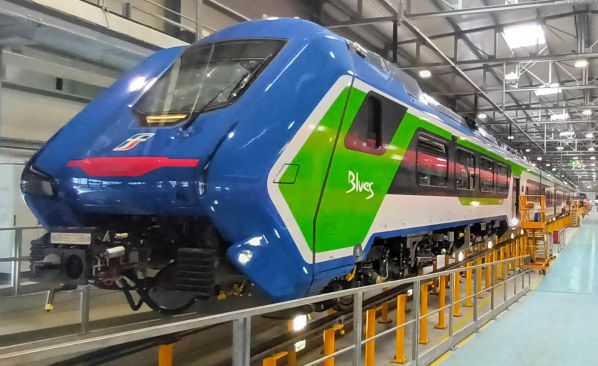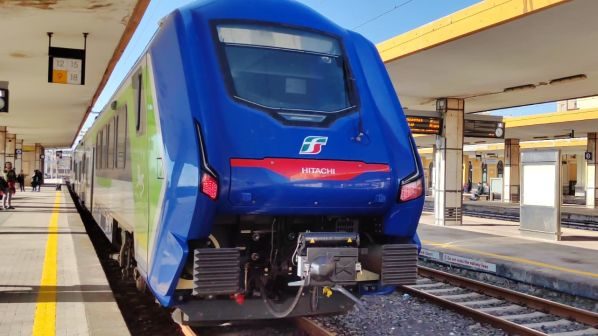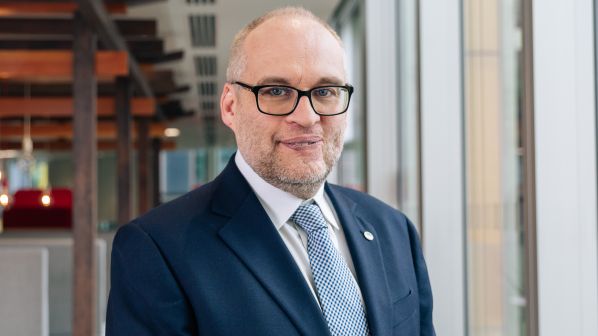HITACHI Rail has completed the first batch of 20 tri-mode trains under a €1.23bn framework contract with Italy’s national operator Trenitalia for 135 trains. Hitachi has a firm order for 98 trains so far in a mixture of three and four-car sets.
The multiple-unit trains, which are branded Blues by Trenitalia and Masaccio by Hitachi, can be powered from overhead electrification (3kV dc on the conventional Italian network), diesel traction or battery for up 15km - primarily to reduce emissions on non-electrified routes in urban areas and cut noise levels in stations. The train can operate at a maximum speed of 160km/h in conventional electric or diesel mode, but only 100km/h under battery power.
Hitachi says the trains are designed to reduce emissions and fuel consumption by 50% compared with standard DMUs. The train’s driver advisory system (DAS) also helps to lower emissions by selecting the optimal speed to meet the timetable and reduce energy consumption.
Bi-mode version
Hitachi is developing a bi-mode version of the Masaccio train where the diesel engine will be replaced with a more powerful lithium titanate oxide (LTO) battery with a capacity of between 132kWh and 500kWh. This would extend the range of the train to around 100km with a full load of passengers.
“We are trying to achieve the best integration between the battery and the traction system,” Mr Andrea Pepi, executive director, line of business vehicles Italy at Hitachi Rail, told IRJ at the Hitachi rolling stock plant in Pistoia. “We can charge the battery in less than 10 minutes from the overhead catenary.”
Hitachi plans to complete the first prototype bi-mode Masaccio train next year, and to certify the first train in 2025. It says there is flexibility in the framework deal with Trenitalia to substitute some of the tri-mode Blues trains for the new bi-mode version. The train is also designed so that tri-mode trains can be converted to bi-mode operation if desired.
“The roll-out of our cutting-edge Masaccio battery train marks an important step in our efforts to decarbonise European rail,” says Mr Luca D’Aquila, COO at Hitachi Rail Group and CEO of Hitachi Rail Italy. “With around 40% of regional lines across the continent remaining unelectrified, battery hybrid technology can have an immediate impact.”
D’Aquila says Hitachi is focusing on the development of battery traction rather than hydrogen. “The payback and return on investment in battery trains is the right answer at the moment," he says. “We are testing hydrogen in Japan in cooperation with an automotive company, but we need five to 10 years to have meaningful development.”
For more information on European fleet orders, subscribe to IRJ Pro.



